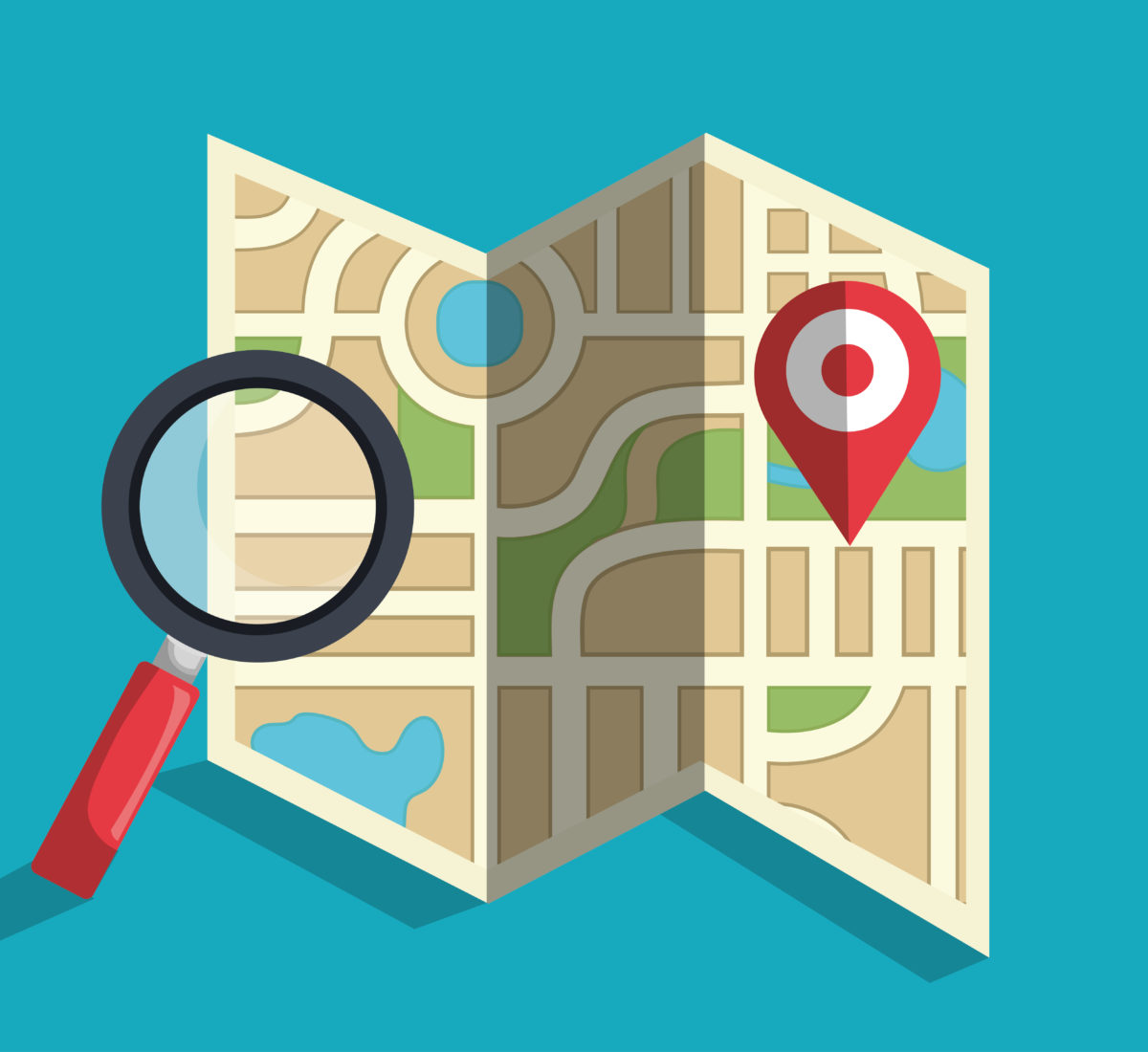Grow your business with Ontrack Analytics geographic insights
The geographic insights generated by your customers are a valuable asset that can help your business scale. In this article, you’ll learn how to profit from this often overlooked report.
You’ve probably noticed this while traveling: store shelves are not stacked in the same way. More than that, if you go to a different country, McDonald’s has a different menu, inspired by local food. These companies do this for a (good) reason: they leverage their customer’s geographic insights in order to gain more revenue by appealing to them in an individual manner It makes the offer much more personal and creates a bond between the brand and the consumer.
The purchasing behavior of customers is directly influenced by where they live and work. Knowing the characteristics that define our customers is important because we can use these insights to better adapt our offer and advertising and generate more sales.
So how do we get to know the geolocations of our most valuable users in order to create a more efficient marketing strategy?
One fundamental way of gaining this type of insights and start personalizing your brand around your customers is by using geographic segmentation in your marketing strategy. This information can help you understand your customer base, improve your business plan and create more precise campaigns with a higher ROI.
Since the business world is a fast-paced place and not everyone has the necessary time to learn how to use Google Analytics and gain actionable insights, we recommend using the Ontrack Analytics App. It’s a great way of obtaining valuable data easier and faster.
In this article, I’m going to show how to use Ontrack Analytics to get this information and a few helpful tips on how you can act based on the data received.
First things first, after you log in with your Google Analytics account, access Analytics Insight and there you’ll find the Geographic Insights report.

What is geographic segmentation?
Geographic segmentation is a technique that groups customers based on their location (nations, regions, cities, etc) in order to increase marketing management precision.
If you want to grow your business using geographic insights, here are a few things you should consider while creating your segments:
- Location has a proven influence on the needs of consumers and, depending on your type of business, the costs of distribution. Make sure to analyze top-performing and underperforming locations and figure out the differentiating factors between them. What do the top-performing areas have in common? What characteristics of the underperformers make them shy away from your store?
- Culture plays a massive part in the sales process of your product. The lifestyles of our customers are directly related to culture. What doesn’t integrate (directly or indirectly) is bound to fail sooner or later. Once again, you can think of all the different McDonald’s menus, derived from local food.
- Location size has a direct effect on your conversions. There’s plenty of fish in the ocean, however, not all are gonna buy from you. A sizeable audience can give you more clients and who doesn’t want that?
A good ocean is great, but what kind of fish does it have?
- Are they urban, suburban or rural? Obviously, different people have different needs and different ways of fixing them. These 3 categories are differentiated by social, political, and financial gaps. People from urban areas tend to focus more on what’s new and innovative. Those that live in suburban areas enjoy more comfort. People from rural areas embrace tradition and durability.
- Climate, depending on your type of business, can have a massive impact on your conversions. To put things into perspective: if you’re selling swimsuits and sandals in Alaska, you’re not going to get very far.
- Language is another key factor you should consider. Not only on a macro-level (Japanese vs Russian) but also on a micro-level (California vs North Carolina). Words or concepts may not have the same meaning in two different countries or even in different parts of the same country. Most successful businesses approach their customers on a more personal level by using the same language as them.
These insights will help you to increase the focus in the important areas. With better focus, your level of competitiveness in that market segment is bound to increase and, together with it, the number of generated sales.

What are the advantages of geographic segmentation?
- Understanding customers is essential. It’s important to realize the geographical insights is not a stand-alone tool. You must use it together with all other relevant reports. This way you will gain key information about your customer base.
- Who you are reaching?
- Who is engaging with your brand?
- Where are they from?
- By doing the entire analysis you can better comprehend customers’ behavior and predict their future actions, making way for a more efficient strategic plan.
- Identifying growth opportunities. By benchmarking your data and understanding usage generated by your users, you can start making improvements to get better results.
- Performance judgment. Ultimately, geographic insights can help evaluate the performance of your offer and/or campaigns.
- Which areas bring the most revenue?
- What areas are underperforming?
- Am I efficiently reaching the target audience?
What are some examples of geographic segmentation?
- Food
Would a Philly Cheesesteaks have as much success in India?
The food industry is probably the most common example that people think of when it comes to geographic segmentation. That’s why this article starts with McDonald’s.
Try to think about all the restaurants you’ve ever visited. After recalling your past experiences, I’m sure you’ll realize that most of them differentiate themselves based on culture. They are either derived from the local culture or are complementary to it.
- Cars
Are there as many Renault Twizy potential customers in Siberia as there are in Los Angeles? Of course not.
These two locations are entirely different, thus the people living there are also different. In LA the weather is sunny most of the time, it’s urban, and people have high living standards, so they can afford to care more about the environment and make a few sacrifices (such as money or range of mobility).
In Siberia, however, there’s a rural environment, much more violent weather conditions, and the majority of the population has a low income. This means they can not possibly make such sacrifices.
- Clothing
Can Australian bikinis have as much success in Norway as they do back home?
Some success can be had during vacation-season, but it’s not the same thing. One type of business is successful during summer and the other is all-year-round successful. Which one would you want your business to be?
Of course, these are some extreme examples, but they make a valid point:
One main factor that influences your customer’s needs and purchase behavior is location and the characteristics derived from it.

Fair enough, but how do I use geographic data to scale my e-commerce shop?
Campaigns (create, examine and optimize)
Creating great campaigns is much easier when you know who to target and the locations of your most engaged clients.
By doing research based on your newly acquired geographical data, you can uncover the characteristics of specific segments and approach potentials in a more personalized manner that speaks directly to them.
You can also use the Geographical Insights report in order to examine the success of your targeting. Are you reaching the right people?
Bonus: If you also have a physical shop, you can analyze which areas are most fond of your business. This way you know where you can leverage special promos or who you should be targeting in your campaigns.
Discover new markets (to include or to exclude)
A useful tip if you plan to use geographic insights to grow your business. Don’t rely on reinforcing the positive areas only. Also, exclude the negatives. This way, money is spent more efficiently.
- Discover the locations where your store has the highest success rate and optimize it even further by creating specially tailored campaigns targeting those locations individually.
- Test out different approaches in under-performing areas. You can try various incentives, such as lower or free shipping rates, promos or even try different marketing channels. Ultimately, if things just don’t work, exclude the specific location from your targeting and focus on locations where there’s a high success rate.
- Increase your ROI by excluding areas with no success from your campaigns.
Here’s an example:

In the above report, Irvine stands out. It represents nearly 13% of all traffic, yet it only amounts to 1.44% of revenue and has a low conversion rate of 0.35%. Now that we’ve identified a problem, step two is figuring out why is this happening.
This is where you’d want to run a diagnosis and see if your store is working fine for Irvine users. If no problem is detected, try reaching users from Irvine and ask them:
What’s stopping you from buying?
How can we improve our store so we can better satisfy you?
How can we provide a better shopping experience?
Their answers should give you a few ideas on what to test on your website in order to improve their experience. Ultimately, if all has been tested and failed, remove this segment from your targeting in order to save money / spend it on better quality traffic that will provide a better return.
Increase the relevance of your product/offer
Geographic insights can help you turn regions, countries or cities into sales areas by simply increasing the relevance of your offer and the way in which you’re delivering the marketing strategy.
Run a survey in successful areas and ask people what they enjoy most about your store. These answers will give you key information about what makes your customers happy.
A survey can be useful in under-performing locations as well. Ask people why they’re not buying and how could you improve your offer in order to better satisfy their needs.
Where your offer or campaigns fail, try verifying if you’re approaching potential customers using their lingo or if you’re highlighting the benefits that are most important to them.
Now you know why your favorite businesses act differently depending on what part of the world you’re in. The next step is to start applying the same strategy to your business in order to generate more sales. All that’s left now is to log in to the Ontrack Analytics App and start evaluating. Don’t forget, we’ll help you along the way with useful tips, based on your specific data.
Article takeaways:
- Analyzing your traffic based on geographical insights
- Find best-performers and evaluate what generates their engagement in relation with your brand
- Find under-performing locations and
- Try to reach out to users and turn them around
- Exclude them from your strategy and campaigns
- Increase ROI by creating laser-focused campaigns based on analyzed data
- Optimize your store and grow your business using geographic insights
Resources:
